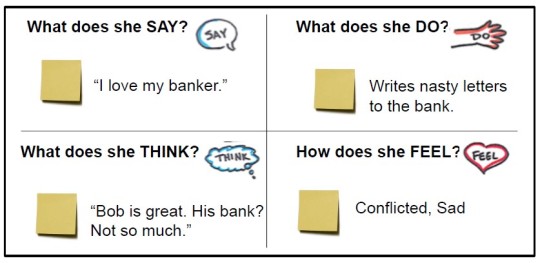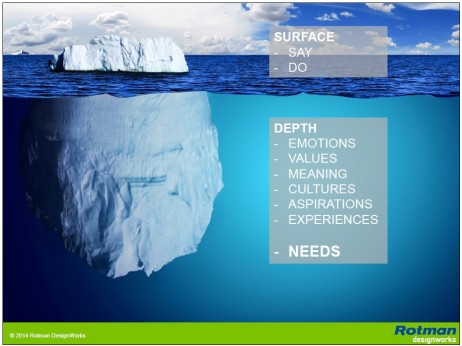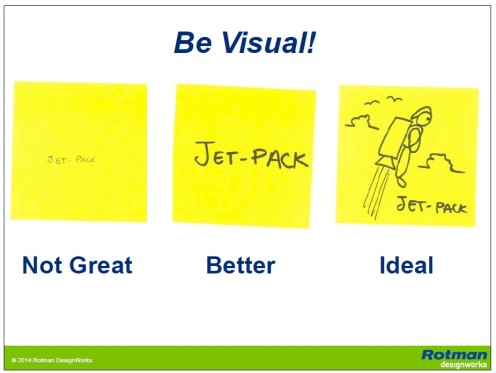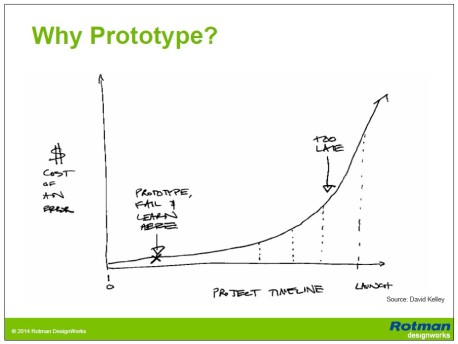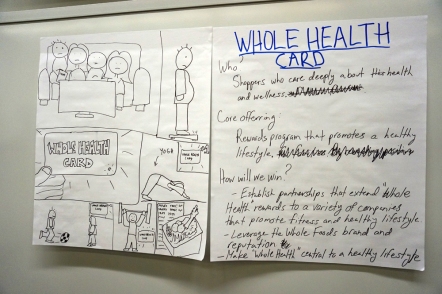Understand the five forces to better position your company that is more profitable and less vulnerable to attack.
The industry structure defined by the five forces determines the profitability of an industry regardless of the fact that it may be producing a product or service, is emerging or mature, is regulated or unregulated, is high-tech or manual. And the industry structure should be as much of a concern to a strategist as his or her company’s position.
The five forces are:
- Threat of new entrants
- Power of suppliers
- Power of customers
- Threat of substitutes
- Rivalry among competitors
Threat of new Entrants
It’s the threat of new entrants and not the entry itself that holds down the profitability. Lesser barrier to entry, powerful financial position of the potential entrant all contributes to greater threat. It usually takes considerable investment from the incumbent to fight and win.
However, incumbents do have some advantages in the form of barriers to entry categorized into seven as given below.
- Supply-side economics: This is basically economies of scale. Incumbents output in the form of product, advertising etc. might be large driving down the cost per piece and to compete with them, the new comer may have to come big or take cost disadvantage – lesser profit, higher sale price etc.
- Demand-side benefits of scale: The more customers who fancy incumbents product such as apple fans, the greater the barrier for the new entrant to make customers switch and that’ll probably be the case till the new entrant builds up considerable customer base.
- Switching cost: These are fixed cost the customer has to bear. Mostly in terms of hardware, retraining for users and employees, documentation and the like. Mobile phone companies use this tactics to an extent by locking the customers in with the release of new phones. Database and software systems are similar examples.
- Capital requirement: This can be in the form of fixed facilities, inventory cost, customer credit, advertisement; upfront R&D. Advt. & R&D are unrecoverable expenses and the higher the unrecoverable expenses, the harder the entry. But do keep in mind that if the returns from the industry are good, investors will fund it.
- Incumbent advantages independent of size: These can be in the form of established brand identities, preferential access to supplier, best geographical location, fine-tuned production process etc.
- Unequal access to distribution channels: These manifests in the form of shelve space in shops for food items, agent access in case of airlines, displacing existing product from the super market such as getting Costco to sell your product.
- Restrictive government policy: It can be in many forms including licensing requirements, safety and environment regulations, expansive patent rules to protect from imitation, foreign direct investment limitations. Of course it can also be helpful in some cases as in distributing R&D for general good, subsidies, and reserving space for new entrants as in Canadian wireless industry’s case.
Expected retaliation is no less a threat especially if incumbent is powerful financially & politically, has previously reacted vigorously to new entrant buy cutting prices and public statements and if the new entrant can gain customers only by poaching from incumbent because the growth is slow. Again Canadian wireless industry is a fine example.
Power of Suppliers
Suppliers are powerful whenever buyers cannot play them against each other. They keep most of the profit for themselves. That’s the case when suppliers produce unique products as in the case of pharma companies, when there is no substitute such as pilots union, switching cost are high as in the case of Bloomberg terminals or Charles river trading software, and generally when the supplier industry is more concentrated – few in numbers – than buyers. Some time they can give the threat of integrating forward and make the product available in the market themselves.
Power of Buyers
Buyers tend to keep all the profit for themselves when they can, especially in cases such as when buying undifferentiated products where there are many suppliers, the product is costly relative to their income such as buying a house or when product features have limited attraction. Buyers can also play suppliers when they are very large volume buyers or when they can threaten to integrate backwards such as beverage companies threatening to do packaging themselves.
Threat of Substitutes
The threat is high when the value it brings to the customer is high and the switching cost is low.
Cheap and reliable automobiles threaten public transport companies. Skype phones threaten land lines. Netflix threaten movie-rental business. Courier & parcel services threaten postal service.
Rivalry among competitors
Rivalry among competitors in the same dimension such as price is more likely to erode profitability. On the other hand, when they compete in different dimension, such as product features, support services, delivery time, it’s less likely to be a zero-sum game as it can potentially provide better value for the customer. And in cases when rivals compete on different customer segments with mixes of prices, service, delivery, features, brand identities etc., it can even be a positive sum game. Competition just on price is probably the worst because it transfers profits directly from an industry to its customers.
How do you analyze the five forces?
Below are some of the questions you can try to answer in order to analyze the five forces.
Threat of new entrant
You are assumed to be the incumbent here
- Can the new entrant use its existing capability to shake up your market?
- Do you have low cost per unit that the new entrant would find hard to match?
- Do you already have a large satisfied customer base?
- Does your customer show brand loyalty?
- Is the switching cost for you customer to the new entrant low?
- Does the new entrant need large capital investment to enter your market?
- Do you have tie-ups or preferential access to distribution channels?
- Does the government policy favor you or the new entrant?
- Are you known to respond vigorously to new entrants by price cutting, promotion etc.?
- Do you wield substantial political & financial power to keep your market share?
- Is it a slow growth industry where new entrant has to poach your customer for business?
Power of Suppliers
You are assumed to be the buyer here
- Is the supplier industry more concentrated? (Few suppliers and many buyers)
- Does the supplier serve many industries? (No one in particular is important)
- Are you a large volume buyer for the supplier? (Especially in high fixed cost industry)
- Is the cost of switching from one supplier to another high?
- Are there substitutes for supplier available?
- Does the supplier offer differentiated product to you?
- Can the supplier integrate forward and produce your stuff?
- Can you integrate backward and produce suppliers stuff?
Power of Customers
You are assumed to be the supplier here
- Are there many buyers or just few?
- Do you have any large volume buyers (especially if you are in high fixed cost industry)?
- Is your product standardized or undifferentiated?
- Is the switching cost high for the buyers?
- Can the buyer integrate backward and produce your stuff by themselves?
- Can you integrate forward and produce the buyers stuff?
- Are they “price” sensitive?
Is the product expensive relative to income? (More price sensitive if yes)
Is the buyer strapped for cash? (More price sensitive if yes)
Is the quality of whatever the buyer does affected by your product? (Less pricing sensitive if it is)
Will your product earn big returns for the buyer in the future? (Less sensitive if it can earn big returns)
Threat of Substitutes
- How does the substitute fare against you in terms of price-features-performance trade-off? The better the relative value of the substitute, greater the threat.
- Does the buyer have high cost of switching to substitute?
Rivalry among competitors
- Are there many players of equal size and power in the market? Poaching will be rampant when there are many players.
- Is it a slow growth industry? Vigorous fight for market share if it’s a slow growth industry
- Are the rivals highly committed to business with goals going beyond economic performance?
- Is there a price war already?
Do the rivals compete in the same segment?
Are the products and services nearly identical in the same segment?
Are the fixed cost high and marginal costs low?
Do they have to expand capacity in large increments to be efficient?
Is the product perishable? (Food, computer software/hardware)
Factor look-alikes – Forces
Now, there are certain factors that can be mistaken for factors and may look like they have a direct impact on profitability. However, their influence is only through their impact on the five forces. Most common are, industry growth rate, government, complementary products and services. Complementary products for example make substitution difficult reducing the threat from substitution. Gasoline powered automobiles have enough easily accessible gas stations throughout the country unlike electric automobiles.
Factors for strategic planning
You have a company. Now where do you stand in terms to rivals, customers, suppliers, substitutes and new entrants? Understanding the five factors and analyzing the industry will help you develop the strategy to position your company, exploit industry change, shape the industry structure and define the industry.
Position your company: This is about finding a spot where the forces are the weakest. An understanding of the forces also helps with identifying opportunities and to decide on entering or exiting the market.
Exploiting industry change: This is about sniffing opportunities in the changing industry landscape for exploitation to the company’s advantage. Itunes exploited the reluctance of music labels to board on each other’s platform when music was getting more into digital format by providing a common platform to sell music to large customer base.
Shaping new industry: Rather than responding to the changing industry as in the case of exploiting, you can shape the industry structure itself by altering the five forces for the better and thus transforming the industry once and for all. While everyone in the industry benefits from it, you can benefit the most by shifting the industry into a spot where you can excel.
You do that by
Re-dividing profitability; where in you divide the pie in favor of existing incumbent instead of handing over to suppliers, customer, new entrants and substitutes. You try to understand the factors constraining the profit and address them effectively plugging the leak to suppliers, buyers, substitutes and new entrants.
A few ways of doing it:
Established Rivals: Differentiate your product to thwart competition
Fickle Customers: Expand your service making it harder for the customers to leave unless they are willing to compromise.
Suppliers: Standardize your parts so that many players can supply what you need.
New Players: Driving up the fixed cost for competing to thwart new entrants.
Substitutes: Offer better value through new features and wider product accessibility.
Expanding the profit pool, where in everyone benefits because the overall productivity level and processes of the industry improves. This is basically a win-win opportunity for all.
In sum, a strategist who looks beyond his company to understand the factors that impact the industry structure would be better positioned for long time survival and profitability of the company.
